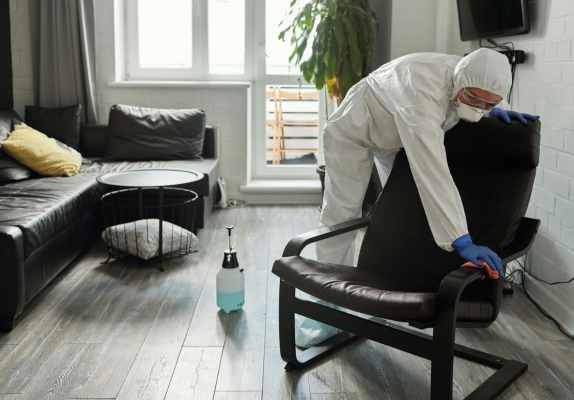How to Restore and Polish Marble Floors for a Brilliant Shine?
Marble floors add elegance to any space, but over time, they can lose their natural shine due to stains, scratches, and wear. Regular maintenance and the right techniques can help keep marble surfaces polished and looking new. However, polishing and restoring marble floors requires careful attention to prevent further damage. Sofa Cleaning Companies Riyadh
This guide outlines the steps to effectively clean, repair, and restore marble floors to their original shine.
Understanding Marble and Its Care Needs
Marble is a beautiful but porous stone, which makes it vulnerable to stains and scratches. Its porous nature means that it readily absorbs liquids, oils, and acidic substances, which can lead to dull spots or permanent stains. Marble floors need a specific cleaning approach and consistent care to maintain their sheen and durability. Pre-Opening Cleaning Companies
-
Start with a Thorough Marble Cleaning
Before any polishing or restoration begins, marble floors must be cleaned thoroughly. Dust, dirt, and small particles can cause scratches when polishing. Start by sweeping the floor with a soft broom or dust mop to remove debris. Avoid using abrasive brushes that can damage the marble surface. Construction cleaning
Next, use a pH-neutral cleaner designed for marble cleaning. Many household cleaners contain acidic or alkaline components that can etch and dull marble over time. A pH-neutral cleaner effectively removes dirt and grime without causing any chemical damage.
-
Identify and Treat Marble Stains
Stains on marble floors can often result from accidental spills, foot traffic, or improper cleaning agents. Identifying the type of stain helps determine the right approach to remove it. Oil-based stains, for instance, respond well to mild alkaline cleaners, while organic stains, such as those from coffee or wine, may need a hydrogen peroxide treatment. Cleaning Service Riyadh
Prepare a poultice paste by mixing baking soda with water or a cleaning powder specifically designed for marble. Apply the poultice to the stained area, covering it with plastic wrap and securing the edges.
-
Buff Out Minor Scratches and Scuffs
Scratches are common on marble floors, especially in high-traffic areas. Minor scratches can be removed through gentle buffing. For this, a soft cloth or fine-grade steel wool can be used to buff out light scratches. Rub the scratched area gently in a circular motion until the scratch appears less visible. Housekeeping services
For deeper scratches, a marble polishing powder can be helpful. These powders are specifically formulated for marble and can be used with a soft cloth to polish the surface.
-
Polishing Marble Floors to Restore Shine
After removing stains and buffing out scratches, it’s time to polish the marble floor to bring back its natural shine. Marble polishing can be done using a commercial-grade marble polish or polishing powder. These products contain fine abrasives that help in smoothing out imperfections, restoring the floor’s gloss. Marble Cleaning
Apply the polishing product according to the instructions on the label, using a soft cloth or a low-speed polisher. Move the cloth or polisher in small, overlapping circles to ensure an even polish across the surface.
-
Seal the Marble Surface to Prevent Future Stains
Sealing marble floors helps protect them from stains and enhances their longevity. A marble sealer creates a protective layer on the surface, reducing its absorption rate and preventing liquids from penetrating the stone. Sealing is especially beneficial for high-traffic areas or spaces prone to spills.
-
Use Protective Mats and Rugs
Placing protective mats and rugs in high-traffic areas, such as entrances, can prevent dirt and debris from scratching marble floors. Mats help absorb any moisture or particles brought in from outside, reducing the risk of scratches and stains. Regularly clean and shake out these mats to ensure they remain effective in keeping marble floors protected. Grinding & Polishing riyadh
-
Avoid Harsh Chemicals and Abrasive Tools
Using the wrong cleaning agents can cause permanent damage to marble floors. Avoid cleaners containing vinegar, lemon, or bleach, as they can etch the surface and leave dull spots. Abrasive tools like steel wool or scrub brushes should also be avoided, as they can scratch and dull the marble’s finish.
Instead, stick to products specifically designed for marble cleaning and polishing. Granite polishing products may also be compatible with marble, but check product labels carefully to ensure safe use on marble surfaces. Gentle cleaning and the right materials extend the life of marble floors and help maintain their shine.
-
Consider Professional Restoration for Deep Damage
If the marble floor has extensive stains, scratches, or etching that cannot be addressed with DIY methods, professional restoration may be necessary. Marble restoration specialists have access to specialized tools and techniques, such as diamond grinding and honing, which are effective for deep restoration. These processes remove a thin layer from the marble’s surface to reveal a fresh, untouched layer underneath.
Conclusion
Marble floors are a stunning feature in any space, but they require regular care and maintenance to stay in optimal condition. With proper cleaning, stain removal, polishing, and sealing, marble surfaces can maintain their natural beauty and shine. Following the steps outlined above not only restores a marble floor’s original luster but also helps protect it from future damage.




Top comments (0)